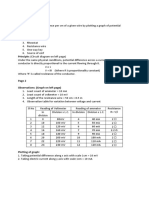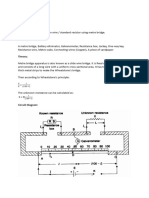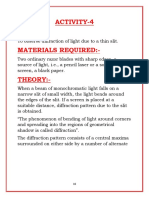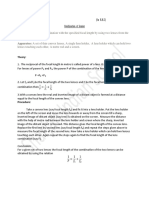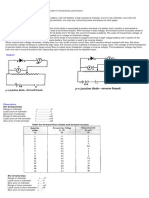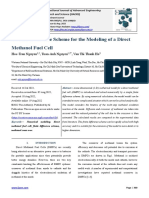80% found this document useful (5 votes)
23K views5 pagesExperiment 8
This document describes how to draw the I-V characteristic curve for a p-n junction diode in forward and reverse bias. The apparatus needed includes a p-n junction diode, batteries, voltmeters, ammeters, resistors, and connecting wires. In forward bias, the current increases slowly at first as voltage increases, then rapidly increases at the cut-in voltage. In reverse bias, a small reverse current initially remains constant with increasing voltage until breakdown occurs at the zener voltage. Tables of readings and graphs of voltage vs. current will be made to show the forward and reverse bias characteristics.
Uploaded by
Gurdeep Singh SagguCopyright
© © All Rights Reserved
We take content rights seriously. If you suspect this is your content, claim it here.
Available Formats
Download as PDF, TXT or read online on Scribd
80% found this document useful (5 votes)
23K views5 pagesExperiment 8
This document describes how to draw the I-V characteristic curve for a p-n junction diode in forward and reverse bias. The apparatus needed includes a p-n junction diode, batteries, voltmeters, ammeters, resistors, and connecting wires. In forward bias, the current increases slowly at first as voltage increases, then rapidly increases at the cut-in voltage. In reverse bias, a small reverse current initially remains constant with increasing voltage until breakdown occurs at the zener voltage. Tables of readings and graphs of voltage vs. current will be made to show the forward and reverse bias characteristics.
Uploaded by
Gurdeep Singh SagguCopyright
© © All Rights Reserved
We take content rights seriously. If you suspect this is your content, claim it here.
Available Formats
Download as PDF, TXT or read online on Scribd
/ 5













